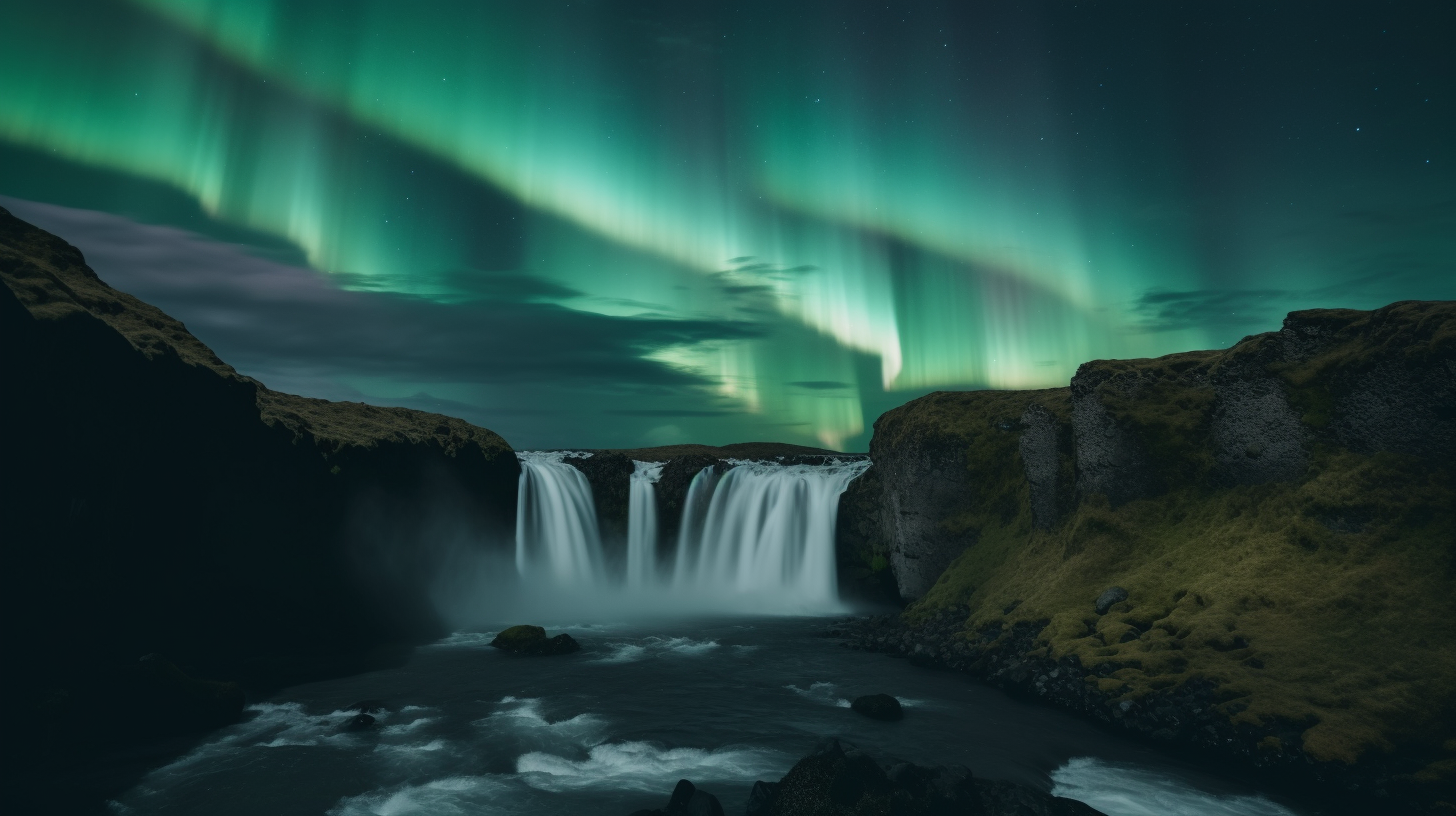
Iceland, the land of fire and ice, is renowned for its breathtaking natural wonders, but few experiences can rival the ethereal beauty of the Northern Lights, also known as the Aurora Borealis. This celestial phenomenon, where shimmering ribbons of light dance across the night sky, draws travelers from around the world to Iceland’s pristine landscapes. In this article, we will delve into the magical realm of the Northern Lights and provide valuable insights for travelers seeking to witness this awe-inspiring spectacle while on vacation in Iceland.
[WATCH OUR VIDEO on THE NORTHERN LIGHTS]
What are the Northern Lights?
The Northern Lights are a captivating natural phenomenon caused by collisions between charged particles from the sun and gas molecules in the Earth’s atmosphere. The result is a mesmerizing display of light in various colors, such as vibrant greens, purples, pinks, and blues. These curtains of light seem to ripple and dance across the sky, creating an enchanting spectacle.
Best Time and Location to Observe the Northern Lights:
To maximize your chances of witnessing the Northern Lights in Iceland, it is important to plan your visit during the optimal time and choose the right location. The prime viewing season typically extends from late August to mid-April, with September to March being the peak months. During this period, the longer nights and clearer skies provide better opportunities for spotting the lights.
Some recommended locations for Northern Lights viewing in Iceland include:
- Reykjavik: Despite being a city, Reykjavik offers relatively dark skies, and if the conditions are right, the Northern Lights can be seen even from the city center. However, venturing out to less light-polluted areas will enhance the experience.
- South Coast: Head along the South Coast of Iceland, away from urban areas, to increase your chances of seeing the lights. Areas like Vík, Skógafoss, and Jökulsárlón Glacier Lagoon offer stunning backdrops for this celestial show.
- Snæfellsnes Peninsula: This picturesque region on the western coast of Iceland provides a unique opportunity to witness the Northern Lights against dramatic landscapes, including the iconic Snæfellsjökull volcano.
Factors Influencing Northern Lights Visibility: Several factors can affect the visibility of the Northern Lights. Understanding these elements can greatly improve your chances of witnessing this incredible phenomenon. Some of the key factors include:
- Solar Activity: The Northern Lights are dependent on solar activity, specifically the occurrence of solar flares and coronal mass ejections. Monitoring the solar activity forecast and the KP index (a scale measuring geomagnetic activity) can help you determine when the lights are likely to be more active.
- Weather Conditions: Clear skies are crucial for optimal Northern Lights viewing. Monitoring the weather forecast and choosing nights with minimal cloud cover will significantly increase your chances of seeing the lights.
- Darkness: Darkness is essential for the Northern Lights to be visible. Seek locations away from artificial light sources, such as cities and towns, to minimize light pollution and enhance the visibility of the lights.
- Duration and Intensity: The Northern Lights can vary in intensity and duration. Some nights may offer short bursts of vibrant lights, while others may provide prolonged and vivid displays. Patience is key when waiting for the lights to make their appearance.
Enhancing Your Northern Lights Experience To make your Northern Lights experience in Iceland truly memorable, consider the following tips:
- Photography: Capture the beauty of the Northern Lights with your camera. Invest in a tripod, learn the basics of night photography, and experiment with long exposure settings to capture the mesmerizing dance of the lights. Adjusting your camera settings, such as increasing the ISO, opening up the aperture, and using longer exposure times, will help you capture the intricate details and vibrant colors of the Aurora Borealis.
- Guided Tours: Consider joining a guided Northern Lights tour. Experienced guides have extensive knowledge of the local weather patterns, solar activity, and ideal viewing spots. They can take you to the best locations based on the current conditions, increasing your chances of witnessing the lights and providing valuable insights into the phenomenon.
- Warm Clothing: Remember to dress warmly when venturing out to observe the Northern Lights. Iceland’s nights can be chilly, especially during the Northern Lights season. Layering up with thermal clothing, wearing a hat and gloves, and ensuring you have sturdy footwear will keep you comfortable as you wait for the lights to appear.
- Patience and Flexibility: Nature is unpredictable, and the Northern Lights are no exception. They can appear suddenly and disappear just as quickly. Be patient and prepared to spend several hours waiting for the lights to materialize. Flexibility in your itinerary will allow you to adapt to changing weather conditions and increase your chances of witnessing this breathtaking spectacle.
Experiencing the Northern Lights in Iceland is a truly mesmerizing and unforgettable adventure. From the vibrant colors painting the night sky to the sense of awe and wonder it evokes, the Northern Lights captivate travelers from all corners of the globe. By understanding the science behind this celestial phenomenon, choosing the optimal time and location, and being prepared with the right equipment and mindset, you can enhance your chances of witnessing the Aurora Borealis during your vacation in Iceland.
Remember, the Northern Lights are a natural wonder, and their appearance cannot be guaranteed. However, with careful planning, patience, and a little luck, you can create a memorable experience that will forever remain etched in your heart and mind. So, embrace the mystery of the Northern Lights, immerse yourself in Iceland’s stunning landscapes, and prepare for a magical encounter with one of nature’s most enchanting displays.
